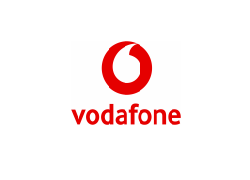Vodafone customers in Torquay and Exmouth in the UK now have data download speeds of up to 700Mbps on their smartphones using Open Radio Access Network (RAN) technology.
Starting out as tiny fishing communities, today Torquay and Exmouth have a combined population of over 87,000 people, making them the urban locations to feature the new network.
“As the first commercial urban deployment of Open RAN in Europe, we’ve been keen to test the network’s performance. From improved internet speeds to greater access to 5G, we can already see the benefits for customers in these towns,” says Alberto Ripepi, Vodafone chief network officer.
Vodafone is seeing peaks of 700Mbps, which is double previous internet speeds, faster than 4G and better than the connectivity provided before.
Over a week, Vodafone’s engineers observed that 5G Open RAN is available more than 99% of the time. This means customers can now make video calls, play online games and view content without any connection issues or delays, and with greater clarity and streaming quality.
This is, in part, thanks to multiple-input multiple-output (MIMO) technology called Massive MIMO. It significantly enhances network performance in both uplink and downlink (faster uploads and downloads).
MIMO technology can increase the capacity of a wireless connection using the same bandwidth, expanding the capability of the mobile site. This means a greater number of customers can connect devices to the network at the same time without any impact on the connectivity they receive.
It works by focussing the signal to make transmission more efficient, allowing Vodafone to continually optimise the network. This in turn allows for more efficient use of resources during peak times throughout the day as and when the customer needs, which also improves overall energy efficiency.
New services and quicker innovation
Unlike traditional radio access networks, Open RAN is not limited to single suppliers, offering a chance for new, smaller suppliers to help build out mobile networks.
Because of its modular design, Vodafone will keep improving the service. In the future, provision and installation of new developments will happen much faster because we can work with specialised suppliers to deliver niche and more intelligent services.
Open RAN will also allow Vodafone to introduce new features simultaneously across multiple sites, add or direct capacity and resolve outages instantly. Customers will receive new services more quickly, as well as benefit from higher internet speeds and a more reliable connection.
This is essential when considering the popularity of new technologies such as Virtual Reality (VR) and the metaverse, which are increasing the demand on network capacity.
Connecting West Country
Through its development of Open RAN, Vodafone is committed to having 30% of all mobile sites in the EU running on the technology by 2030.
Currently Vodafone has 14 sites live in the UK, referred to as the ‘golden cluster’. A fifth of all the UK’s sites will be based across Wales and the West Country and be live within the next five years. The roll-out plan includes five cities with over 100,000 citizens Exeter, Plymouth, Swansea, Telford and Birkenhead.
Alberto concludes, “We believe in the power of connectivity and digital services to strengthen the resilience of economies. That is why we’re on a mission to connect people, places and things and bring 5G to more customers across both rural and urban areas.”
Comment on this article below or via Twitter: @VanillaPlus OR @jcvplus






